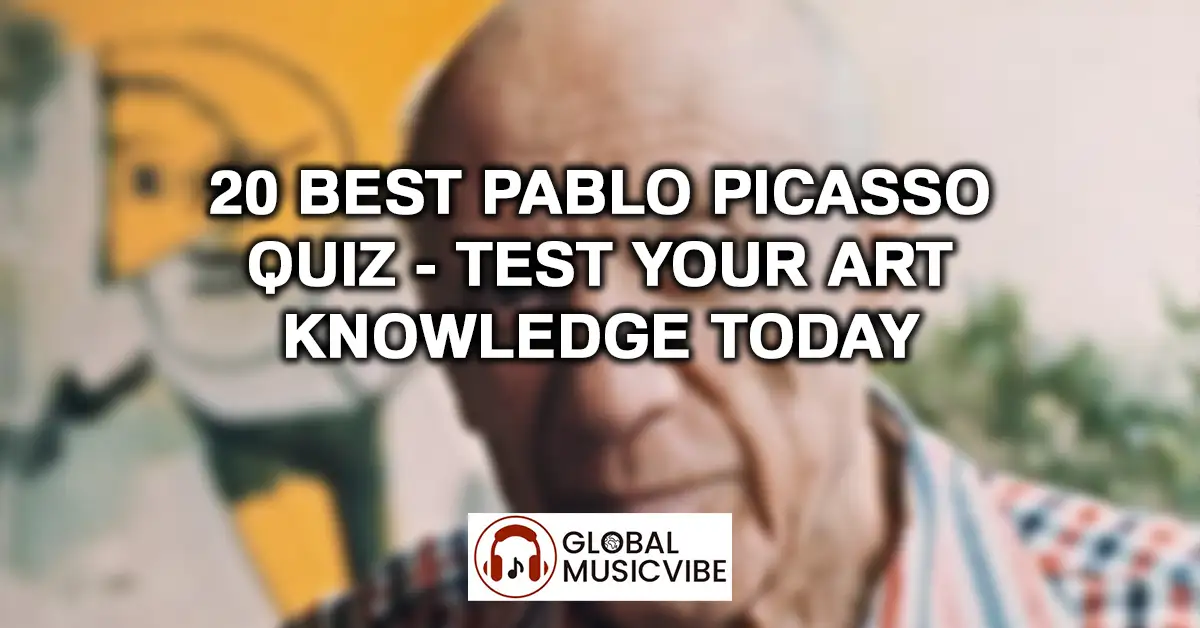Welcome to the ultimate Pablo Picasso quiz! Test your knowledge about the revolutionary Spanish artist with 20 comprehensive questions covering his incredible artistic journey, iconic works, personal life, and lasting cultural impact. This Picasso trivia challenge will take you through his evolution from Blue Period to Cubism and beyond.
Whether you’re an art enthusiast or discovering Picasso’s genius, these carefully crafted questions span his artistic periods, groundbreaking techniques, personal relationships, and revolutionary contributions to modern art. Discover fascinating facts about the artist who forever changed how we see and create art.
Instructions: Take your time with each question and enjoy detailed explanations that will deepen your Picasso knowledge. How well do you really know the master of modern art?
Your Score: 0/20
Your Pablo Picasso Quiz Journey
From Málaga to Modern Art Master
This Pablo Picasso quiz journey began with exploring the foundations of one of art’s most revolutionary figures. Born in Málaga, Spain in 1881, Picasso’s path to artistic greatness started early under his father’s guidance. His journey from prodigious child to groundbreaking innovator demonstrates the evolution of modern art itself.
Understanding Picasso’s Blue and Rose Periods reveals how personal experiences shaped his artistry. The tragic suicide of his friend Carlos Casagemas triggered the melancholic Blue Period, while meeting Fernande Olivier brought warmth and optimism to his Rose Period works.
Cubist Revolution and Artistic Innovation
Picasso’s collaboration with Georges Braque created Cubism, fundamentally changing how we perceive and create art. “Les Demoiselles d’Avignon” launched the Cubist movement, breaking traditional perspective and incorporating African art influences. His pioneering use of collage further expanded artistic possibilities.
Analytical and Synthetic Cubism phases demonstrated Picasso’s continuous evolution, from fragmenting reality to reconstructing it in new ways. His innovations influenced countless artists and established him as a leader of the avant-garde movement.
Masterpieces and Cultural Impact
Picasso’s masterpieces transcend mere artistic achievement to become cultural statements. “Guernica” stands as history’s most powerful anti-war painting, created in response to the Spanish Civil War bombing. His multiple versions of “The Weeping Woman” and reinterpretations of classical works like “Las Meninas” show his dialogue with art history.
His later works explored mythological themes and sexuality, proving that creativity and innovation continued throughout his long life. These paintings influenced subsequent generations while maintaining his distinctive style.
Personal Life and Artistic Legacy
Picasso’s personal relationships deeply influenced his art, with wives and lovers often serving as models and muses. Married twice and father to four children, his personal life was as complex and dynamic as his artistic output.
Creating approximately 50,000 artworks in his lifetime makes Picasso one of history’s most prolific artists. His contributions to Surrealism and other movements demonstrate his continued relevance beyond Cubism.
Enduring Influence
Picasso’s death in 1973 marked the end of an era, but his influence continues to shape contemporary art. His revolutionary approach to form, color, and perspective established principles that artists still explore today. From breaking artistic conventions to addressing social issues through art, Picasso proved that creativity could change the world.
Whether you achieved a perfect score or discovered new Picasso facts, his journey from Spanish child prodigy to global art icon demonstrates how innovation, persistence, and artistic courage can create lasting cultural change.
Pablo Picasso’s legacy reminds us that true artistic genius lies not just in technical skill, but in the courage to see the world differently and share that vision with others.
Continue Your Art Discovery Journey
Congratulations on completing the ultimate Pablo Picasso quiz! Your exploration of his artistic periods, revolutionary techniques, masterpieces, and cultural impact demonstrates the kind of appreciation that makes studying art history so rewarding—there’s always more to discover about artistic genius.
Whether you’re an art enthusiast or newly discovering Picasso’s innovations, remember that his revolutionary approach to creativity continues to influence artists today, proving that true artistic vision can change how we see and understand the world.
Frequently Asked Questions About Pablo Picasso Quiz
What topics does this Pablo Picasso quiz cover?
This comprehensive quiz covers Picasso’s early life and Blue Period, his revolutionary development of Cubism, famous masterpieces like “Guernica,” and his personal life and artistic legacy. Questions span his entire career from childhood in Málaga to his death in 1973.
How many questions are in this Picasso quiz?
The quiz contains 20 carefully crafted questions divided into four categories: Early Life & Blue Period, Cubism & Revolutionary Techniques, Masterpieces & Major Works, and Personal Life & Legacy.
Is this quiz suitable for art students and beginners?
Yes! The quiz is designed for both art enthusiasts with extensive knowledge and beginners discovering Picasso’s work. Each question includes detailed explanations to enhance learning regardless of your current knowledge level.
What makes Picasso’s art historically significant?
Picasso co-founded Cubism, revolutionizing how we perceive and create art. He created approximately 50,000 artworks, pioneered collage techniques, and created powerful social commentary pieces like “Guernica,” influencing modern art permanently.
Can I retake this Pablo Picasso quiz?
While the quiz locks questions progressively to enhance the learning experience, you can refresh the page to retake it and improve your score while reinforcing your knowledge of Picasso’s artistic genius.

